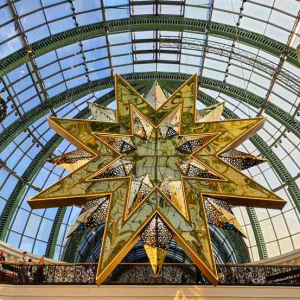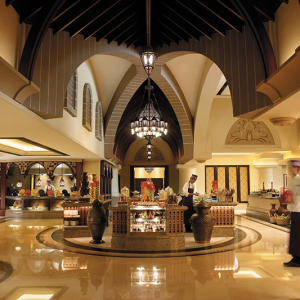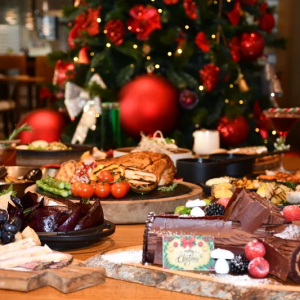In the middle of Abu Dhabi’s modern skyline stands a strong symbol of history and heritage – Qasr Al Hosn. This iconic white fort, once the home of the ruling Al Nahyan family, is the oldest and most important building in the capital of the United Arab Emirates. With its thick white walls and traditional watchtowers, Qasr Al Hosn tells the story of how Abu Dhabi grew from a small fishing village into a global city.
Today, Qasr Al Hosn is much more than just an old fort. It’s a beautifully restored museum that welcomes visitors from around the world to explore the rich culture, traditions, and development of Abu Dhabi. Whether you’re a history lover or just curious to know more about the UAE, this fort gives you a deep and memorable look into the nation’s past.
A Fort With a Rich Story
Qasr Al Hosn was built in the 1790s as a watchtower to protect Abu Dhabi’s only freshwater well. Later, it was expanded into a larger fort and became the seat of government and the royal family’s residence. For nearly 200 years, it was the center of political power and decision-making in Abu Dhabi.

The name “Qasr Al Hosn” translates to “Palace Fort.” Its strong walls and strategic location made it a safe space for the rulers. It also served as a gathering place for local leaders and tribes. Over time, as the city grew, the fort remained a symbol of strength and unity.

Even after the government offices moved out in the 1960s, Qasr Al Hosn stayed important. Restoration work began in the 1980s, and major renovations took place in the 2000s to turn the fort into a public heritage site.

The Museum Experience
Today, the inside of Qasr Al Hosn has been transformed into a modern museum. It offers a mix of historical objects, interactive displays, videos, and photographs. Each room tells a part of the UAE’s journey – from Bedouin life in the desert to the discovery of oil and the rapid development that followed.
Visitors can walk through the fort’s original living quarters and feel what life was like for the rulers of the past. There are also galleries showing rare documents, traditional weapons, jewelry, and everyday items used by Emiratis long ago.
One of the highlights is the oral history section, where you can hear the voices of elders sharing memories of old Abu Dhabi. These stories make the past feel personal and alive.
A Living Heritage Site
Qasr Al Hosn is not just a place to look at the past – it’s also a space that celebrates living culture. Throughout the year, the fort hosts traditional music and dance performances, handicraft demonstrations, and workshops. You can see artisans weaving palm fronds, making pottery, or performing Al Ayyala – a traditional Emirati group dance.
The fort is also home to the House of Artisans, which offers classes and exhibitions about traditional crafts like Al Sadu (weaving), Talli (embroidery), and Khoos (palm frond braiding). These activities help keep Emirati heritage alive and connect young generations to their roots.
Qasr Al Hosn Festival
One of the best times to visit Qasr Al Hosn is during its annual festival. The Qasr Al Hosn Festival is a ten-day celebration that brings history to life. Families come to enjoy cultural shows, food stalls, camel rides, and storytelling sessions. It’s a fun and educational experience that attracts thousands of people every year.
The festival also includes guided tours, artist talks, and live performances that showcase both traditional and modern Emirati culture. Whether it’s folk dances, poetry recitals, or falconry displays, the event offers something for everyone.
A Peaceful Place in the City
Despite being in the heart of Abu Dhabi, Qasr Al Hosn offers a quiet, reflective space. The fort is surrounded by open courtyards, gardens, and shaded walkways. Visitors can relax under the palm trees or enjoy a coffee at the café while admiring the beautiful architecture.
At night, the fort looks magical as lights highlight its clean white walls and the soft sounds of traditional music fill the air. It’s a peaceful break from the busy city around it.
What You Should Know Before Visiting
- Opening Hours: Qasr Al Hosn is open daily. It’s best to check the official website for the most current hours.
- Tickets: Entry is free for children under 18. Adults pay a small fee, and there are family packages and group discounts.
- Location: It’s located on Sheikh Rashid Bin Saeed Street, right in the center of Abu Dhabi.
- Dress Code: Modest clothing is advised. While the museum is modern, it’s still a place of cultural respect.
- Accessibility: The fort is wheelchair-friendly and includes ramps and elevators.
More Than a Tourist Spot
Qasr Al Hosn is more than just a tourist destination – it’s a symbol of national pride. For many Emiratis, it’s a reminder of their ancestors’ hard work, resilience, and wisdom. For visitors, it’s a chance to understand the deep cultural roots that have shaped the UAE into what it is today.
Whether you’re exploring the old walls, enjoying a traditional dance, or simply soaking in the peaceful atmosphere, a visit to Qasr Al Hosn is an unforgettable experience. It’s a place where the past and present live together in harmony
Also read: This Artistic Warehouse Is Changing the Way We Experience Art














